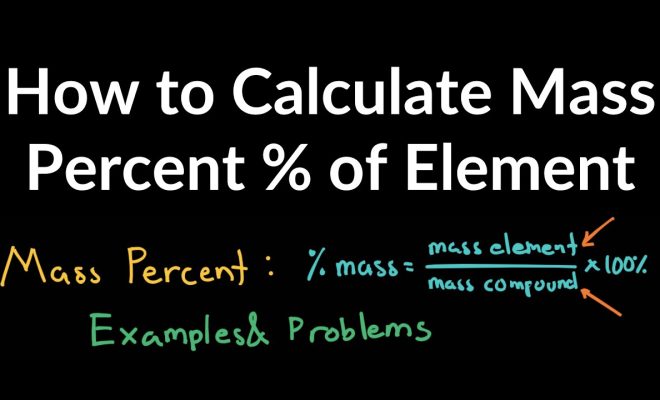How to calculate mass of elements

Discovering how to calculate the mass of elements is essential in the study of chemistry and physics. This knowledge is crucial for understanding a wide range of phenomena, including chemical reactions, atomic structures, and molecular behavior. In this article, we will explore the steps necessary to determine the mass of elements.
1. Understand atomic mass and atomic number
Each element has a unique atomic number, which represents the number of protons in its nucleus. The atomic mass is the total number of protons and neutrons within an element’s nucleus. The periodic table arranges elements according to their atomic numbers, so it is a valuable resource for determining an element’s properties.
2. Locate the element on the periodic table
Find the element in question on the periodic table by looking up its symbol or name. The periodic table will often display the atomic number and atomic mass for each element. For example, hydrogen (H) has an atomic number of 1 and an atomic mass of approximately 1 amu (atomic mass unit).
3. Convert atomic mass to grams
The atomic mass unit (amu) is a standard unit used to express the masses of atoms and molecules. One amu corresponds to one-twelveth (1/12) of the mass of a carbon-12 atom, which is approximately equal to 1.66 x 10^-27 kg (kilograms). To convert an element’s atomic mass from amu to grams, multiply it by 1.66 x 10^-24.
4. Determine molar mass
Molar mass refers to the weight of one mole (6.022 x 10^23 particles) of an element. To calculate an element’s molar mass, multiply its atomic mass in grams by Avogadro’s constant (6.022 x 10^23). The molar mass will be expressed in grams per mole (g/mol).
5. Calculate the mass of a specific amount of the element
To find the mass of a given quantity of an element, use its molar mass and the number of moles of the element you are working with. Multiply the molar mass by the number of moles to determine the total mass.
Formula: Mass = Molar Mass x Number of Moles
Example: To calculate the mass of 2 moles of hydrogen (H), use its molar mass (1 g/mol), and multiply it by 2:
Mass = 1 g/mol x 2 moles = 2 grams
In conclusion, calculating the mass of elements involves understanding atomic masses, locating elements on the periodic table, converting atomic masses to grams, determining molar masses, and using these values to calculate the mass for a specified quantity. With these steps in mind, you can accurately determine an element’s mass and apply this knowledge to various scientific and practical applications.






